- Home
- H. P. Lovecraft
[1935] The Shadow Out of Time Page 6
[1935] The Shadow Out of Time Read online
Page 6
And when I studied them with a magnifying glass I could see all too plainly, amidst the batterings and pittings, the traces of those vast curvilinear designs and occasional hieroglyphs whose significance had become so hideous to me. But here is the letter, which speaks for itself.
49, Dampier St.,
Pilbarra, W. Australia,
May 18, 1934.
Prof. N. W Peaslee,
c/o Am. Psychological Society,
30 E. 41st St.,
New York City, U.S.A.
My Dear Sir:
A recent conversation with Dr. E. M. Boyle of Perth, and some papers with your articles which he has just sent me, make it advisable for me to tell you about certain things I have seen in the Great Sandy Desert east of our gold field here. It would seem, in view of the peculiar legends about old cities with huge stonework and strange designs and hieroglyphs which you describe, that I have come upon something very important.
The blackfellows have always been full of talk about “great stones with marks on them,” and seem to have a terrible fear of such things. They connect them in some way with their common racial legends about Buddai, the gigantic old man who lies asleep for ages underground with his head on his arm, and who will some day awake and eat up the world.
There are some very old and half-forgotten tales of enormous underground huts of great stones, where passages lead down and down, and where horrible things have happened. The blackfellows claim that once some warriors, fleeing in battle, went down into one and never came back, but that frightful winds began to blow from the place soon after they went down. However, there usually isn’t much in what these natives say.
But what I have to tell is more than this. Two years ago, when I was prospecting about 500 miles east in the desert, I came on a lot of queer pieces of dressed stone perhaps 3 X 2 X 2 feet in size, and weathered and pitted to the very limit.
At first I couldn’t find any of the marks the blackfellows told about, but when I looked close enough I could make out some deeply carved lines in spite of the weathering. There were peculiar curves, just like what the blackfellows had tried to describe. I imagine there must have been thirty or forty blocks, some nearly buried in the sand, and all within a circle perhaps a quarter of a mile in diameter.
When I saw some, I looked around closely for more, and made a careful reckoning of the place with my instruments. I also took pictures of ten or twelve of the most typical blocks, and will enclose the prints for you to see.
I turned my information and pictures over to the government at Perth, but they have done nothing about them.
Then I met Dr. Boyle, who had read your articles in the Journal of the American Psychological Society, and, in time, happened to mention the stones. He was enormously interested, and became quite excited when I shewed him my snapshots, saying that the stones and the markings were just like those of the masonry you had dreamed about and seen described in legends.
He meant to write you, but was delayed. Meanwhile, he sent me most of the magazines with your articles, and I saw at once, from your drawings and descriptions, that my stones are certainly the kind you mean. You can appreciate this from the enclosed prints. Later on you will hear directly from Dr. Boyle.
Now I can understand how important all this will be to you. Without question we are faced with the remains of an unknown civilization older than any dreamed of before, and forming a basis for your legends.
As a mining engineer, I have some knowledge of geology, and can tell you that these blocks are so ancient they frighten me. They are mostly sandstone and granite, though one is almost certainly made of a queer sort of cement or concrete.
They bear evidence of water action, as if this part of the world had been submerged and come up again after long ages — all since those blocks were made and used. It is a matter of hundreds of thousands of years — or heaven knows how much more. I don’t like to think about it.
In view of your previous diligent work in tracking down the legends and everything connected with them, I cannot doubt but that you will want to lead an expedition to the desert and make some archaeological excavations. Both Dr. Boyle and I are prepared to cooperate in such work if you — or organizations known to you — can furnish the funds.
I can get together a dozen miners for the heavy digging — the blackfellows would be of no use, for I’ve found that they have an almost maniacal fear of this particular spot. Boyle and I are saying nothing to others, for you very obviously ought to have precedence in any discoveries or credit.
The place can be reached from Pilbarra in about four days by motor tractor — which we’d need for our apparatus. It is somewhat west and south of Warburton’s path of 1873, and 100 miles southeast of Joanna Spring. We could float things up the De Grey River instead of starting from Pilbarra — but all that can be talked over later.
Roughly the stones lie at a point about 22° 3’ 14” South Latitude, 125° 0’ 39” East Longitude. The climate is tropical, and the desert conditions are trying.
I shall welcome further correspondence upon this subject, and am keenly eager to assist in any plan you may devise. After studying your articles I am deeply impressed with the profound significance of the whole matter. Dr. Boyle will write later. When rapid communication is needed, a cable to Perth can be relayed by wireless.
Hoping profoundly for an early message,
Believe me,
Most faithfully yours,
Robert B.F. Mackenzie
Of the immediate aftermath of this letter, much can be learned from the press. My good fortune in securing the backing of Miskatonic University was great, and both Mr. Mackenzie and Dr. Boyle proved invaluable in arranging matters at the Australian end. We were not too specific with the public about our objects, since the whole matter would have lent itself unpleasantly to sensational and jocose treatment by the cheaper newspapers. As a result, printed reports were sparing; but enough appeared to tell of our quest for reported Australian ruins and to chronicle our various preparatory steps.
Professor William Dyer of the college’s geology department — leader of the Miskatonic Antarctic Expedition Of 1930–31 — Ferdinand C. Ashley of the department of ancient history, and Tyler M. Freeborn of the department of anthropology — together with my son Wingate — accompanied me.
My correspondent, Mackenzie, came to Arkham early in 1935 and assisted in our final preparations. He proved to be a tremendously competent and affable man of about fifty, admirably well-read, and deeply familiar with all the conditions of Australian travel.
He had tractors waiting at Pilbarra, and we chartered a tramp steamer sufficiently small to get up the river to that point. We were prepared to excavate in the most careful and scientific fashion, sifting every particle of sand, and disturbing nothing which might seem to be in or near its original situation.
Sailing from Boston aboard the wheezy Lexington on March 28, 1935, we had a leisurely trip across the Atlantic and Mediterranean, through the Suez Canal, down the Red Sea, and across the Indian Ocean to our goal. I need not tell how the sight of the low, sandy West Australian coast depressed me, and how I detested the crude mining town and dreary gold fields where the tractors were given their last loads.
Dr. Boyle, who met us, proved to be elderly, pleasant, and intelligent — and his knowledge of psychology led him into many long discussions with my son and me.
Discomfort and expectancy were oddly mingled in most of us when at length our party of eighteen rattled forth over the arid leagues of sand and rock. On Friday, May 31st, we forded a branch of the De Grey and entered the realm of utter desolation. A certain positive terror grew on me as we advanced to this actual site of the elder world behind the legends — a terror, of course, abetted by the fact that my disturbing dreams and pseudo-memories still beset me with unabated force.
It was on Monday, June 3rd, that we saw the first of the half-buried blocks. I cannot describe the emotions with which I actually touched — in objective real
ity — a fragment of Cyclopean masonry in every respect like the blocks in the walls of my dream-buildings. There was a distinct trace of carving — and my hands trembled as I recognised part of a curvilinear decorative scheme made hellish to me through years of tormenting nightmare and baffling research.
A month of digging brought a total of some 1250 blocks in varying stages of wear and disintegration. Most of these were carven megaliths with curved tops and bottoms. A minority were smaller, flatter, plain-surfaced, and square or octagonally cut-like those of the floors and pavements in my dreams — while a few were singularly massive and curved or slanted in such a manner as to suggest use in vaulting or groining, or as parts of arches or round window casings.
The deeper — and the farther north and east — we dug, the more blocks we found; though we still failed to discover any trace of arrangement among them. Professor Dyer was appalled at the measureless age of the fragments, and Freeborn found traces of symbols which fitted darkly into certain Papuan and Polynesian legends of infinite antiquity. The condition and scattering of the blocks told mutely of vertiginous cycles of time and geologic upheavals of cosmic savagery.
We had an aëroplane with us, and my son Wingate would often go up to different heights and scan the sand-and-rock waste for signs of dim, large-scale outlines — either differences of level or trails of scattered blocks. His results were virtually negative; for whenever he would one day think he had glimpsed some significant trend, he would on his next trip find the impression replaced by another equally insubstantial — a result of the shifting, wind-blown sand.
One or two of these ephemeral suggestions, though, affected me queerly and disagreeably. They seemed, after a fashion, to dovetail horribly with something I had dreamed or read, but which I could no longer remember. There was a terrible familiarity about them — which somehow made me look furtively and apprehensively over the abominable, sterile terrain toward the north and northeast.
Around the first week in July I developed an unaccountable set of mixed emotions about that general northeasterly region. There was horror, and there was curiosity — but more than that, there was a persistent and perplexing illusion of memory.
I tried all sorts of psychological expedients to get these notions out of my head, but met with no success. Sleeplessness also gained upon me, but I almost welcomed this because of the resultant shortening of my dream-periods. I acquired the habit of taking long, lone walks in the desert late at night — usually to the north or northeast, whither the sum of my strange new impulses seemed subtly to pull me.
Sometimes, on these walks, I would stumble over nearly buried fragments of the ancient masonry. Though there were fewer visible blocks here than where we had started, I felt sure that there must be a vast abundance beneath the surface. The ground was less level than at our camp, and the prevailing high winds now and then piled the sand into fantastic temporary hillocks — exposing low traces of the elder stones while it covered other traces.
I was queerly anxious to have the excavations extend to this territory, yet at the same time dreaded what might be revealed. Obviously, I was getting into a rather bad state — all the worse because I could not account for it.
An indication of my poor nervous health can be gained from my response to an odd discovery which I made on one of my nocturnal rambles. It was on the evening of July 11th, when the moon flooded the mysterious hillocks with a curious pallor.
Wandering somewhat beyond my usual limits, I came upon a great stone which seemed to differ markedly from any we had yet encountered. It was almost wholly covered, but I stooped and cleared away the sand with my hands, later studying the object carefully and supplementing the moonlight with my electric torch.
Unlike the other very large rocks, this one was perfectly square-cut, with no convex or concave surface. It seemed, too, to be of a dark basaltic substance, wholly dissimilar to the granite and sandstone and occasional concrete of the now familiar fragments.
Suddenly I rose, turned, and ran for the camp at top speed. It was a wholly unconscious and irrational flight, and only when I was close to my tent did I fully realise why I had run. Then it came to me. The queer dark stone was something which I had dreamed and read about, and which was linked with the uttermost horrors of the aeon-old legendry.
It was one of the blocks of that basaltic elder masonry which the fabled Great Race held in such fear — the tall, windowless ruins left by those brooding, half-material, alien things that festered in earth’s nether abysses and against whose wind-like, invisible forces the trap-doors were sealed and the sleepless sentinels posted.
I remained awake all night, but by dawn realised how silly I had been to let the shadow of a myth upset me. Instead of being frightened, I should have had a discoverer’s enthusiasm.
The next forenoon I told the others about my find, and Dyer, Freeborn, Boyle, my son, and I set out to view the anomalous block. Failure, however, confronted us. I had formed no clear idea of the stone’s location, and a late wind had wholly altered the hillocks of shifting sand.
Chapter 6
I come now to the crucial and most difficult part of my narrative — all the more difficult because I cannot be quite certain of its reality. At times I feel uncomfortably sure that I was not dreaming or deluded; and it is this feeling in view of the stupendous implications which the objective truth of my experience would raise — which impels me to make this record.
My son — a trained psychologist with the fullest and most sympathetic knowledge of my whole case — shall be the primary judge of what I have to tell.
First let me outline the externals of the matter, as those at the camp know them. On the night of July 17–18, after a windy day, I retired early but could not sleep. Rising shortly before eleven, and afflicted as usual with that strange feeling regarding the northeastward terrain, I set out on one of my typical nocturnal walks; seeing and greeting only one person — an Australian miner named Tupper — as I left our precincts.
The moon, slightly past full, shone from a clear sky, and drenched the ancient sands with a white, leprous radiance which seemed to me somehow infinitely evil. There was no longer any wind, nor did any return for nearly five hours, as amply attested by Tupper and others who saw me walking rapidly across the pallid, secret-guarding hillocks toward the northeast.
About 3:30 a.m. a violent wind blew up, waking everyone in camp and felling three of the tents. The sky was unclouded, and the desert still blazed with that leprous moonlight. As the party saw to the tents my absence was noted, but in view of my previous walks this circumstance gave no one alarm. And yet, as many as three men — all Australians — seemed to feel something sinister in the air.
Mackenzie explained to Professor Freeborn that this was a fear picked up from blackfellow folklore — the natives having woven a curious fabric of malignant myth about the high winds which at long intervals sweep across the sands under a clear sky. Such winds, it is whispered, blow out of the great stone huts under the ground, where terrible things have happened — and are never felt except near places where the big marked stones are scattered. Close to four the gale subsided as suddenly as it had begun, leaving the sand hills in new and unfamiliar shapes.
It was just past five, with the bloated, fungoid moon sinking in the west, when I staggered into camp — hatless, tattered, features scratched and ensanguined, and without my electric torch. Most of the men had returned to bed, but Professor Dyer was smoking a pipe in front of his tent. Seeing my winded and almost frenzied state, he called Dr. Boyle, and the two of them got me on my cot and made me comfortable. My son, roused by the stir, soon joined them, and they all tried to force me to lie still and attempt sleep.
But there was no sleep for me. My psychological state was very extraordinary — different from anything I had previously suffered. After a time I insisted upon talking — nervously and elaborately explaining my condition. I told them I had become fatigued, and had lain down in the sand for a nap. There had, I sai
d, been dreams even more frightful than usual — and when I was awaked by the sudden high wind my overwrought nerves had snapped. I had fled in panic, frequently falling over half-buried stones and thus gaining my tattered and bedraggled aspect. I must have slept long — hence the hours of my absence.
Of anything strange either seen or experienced I hinted absolutely nothing — exercising the greatest self-control in that respect. But I spoke of a change of mind regarding the whole work of the expedition, and urged a halt in all digging toward the northeast. My reasoning was patently weak — for I mentioned a dearth of blocks, a wish not to offend the superstitious miners, a possible shortage of funds from the college, and other things either untrue or irrelevant. Naturally, no one paid the least attention to my new wishes — not even my son, whose concern for my health was obvious.
The next day I was up and around the camp, but took no part in the excavations. Seeing that I could not stop the work, I decided to return home as soon as possible for the sake of my nerves, and made my son promise to fly me in the plane to Perth — a thousand miles to the southwest — as soon as he had surveyed the region I wished let alone.
If, I reflected, the thing I had seen was still visible, I might decide to attempt a specific warning even at the cost of ridicule. It was just conceivable that the miners who knew the local folklore might back me up. Humouring me, my son made the survey that very afternoon, flying over all the terrain my walk could possibly have covered. Yet nothing of what I had found remained in sight.
It was the case of the anomalous basalt block all over again — the shifting sand had wiped out every trace. For an instant I half regretted having lost a certain awesome object in my stark fright — but now I know that the loss was merciful. I can still believe my whole experience an illusion — especially if, as I devoutly hope, that hellish abyss is never found.
Wingate took me to Perth on July 20th, though declining to abandon the expedition and return home. He stayed with me until the 25th, when the steamer for Liverpool sailed. Now, in the cabin of the Empress, I am pondering long and frantically upon the entire matter, and have decided that my son at least must be informed. It shall rest with him whether to diffuse the matter more widely.

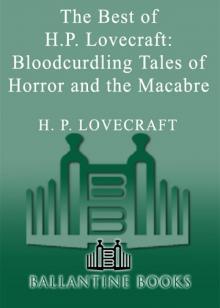 The Best of H.P. Lovecraft
The Best of H.P. Lovecraft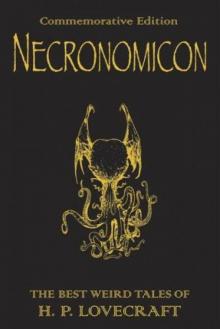 The Definitive H.P. Lovecraft: 67 Tales Of Horror In One Volume
The Definitive H.P. Lovecraft: 67 Tales Of Horror In One Volume The Complete Works of H.P. Lovecraft
The Complete Works of H.P. Lovecraft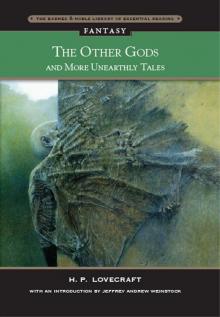 Other Gods and More Unearthly Tales
Other Gods and More Unearthly Tales Lovecraft's Fiction Volume I, 1905-1925
Lovecraft's Fiction Volume I, 1905-1925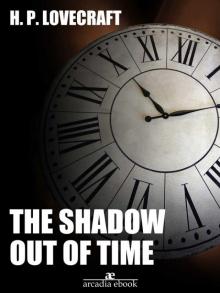 The Shadow Out of Time
The Shadow Out of Time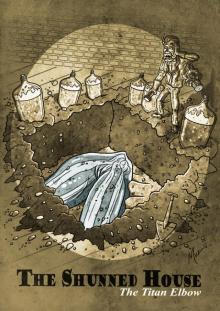 The Shunned House
The Shunned House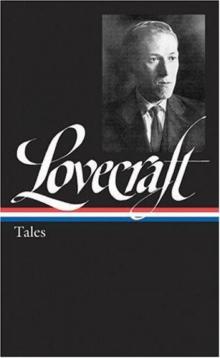 Lovecraft's Fiction Volume II, 1926-1928
Lovecraft's Fiction Volume II, 1926-1928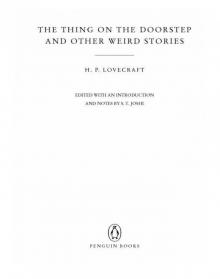 The Thing on the Doorstep and Other Weird Stories
The Thing on the Doorstep and Other Weird Stories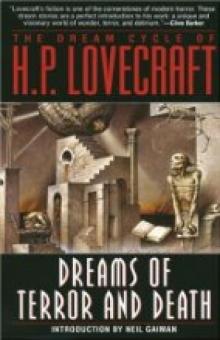 Dream Cycle of H. P. Lovecraft: Dreams of Terror and Death
Dream Cycle of H. P. Lovecraft: Dreams of Terror and Death Great Tales of Horror
Great Tales of Horror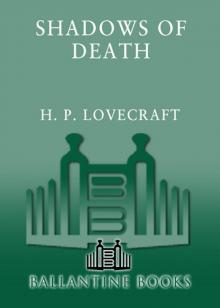 Shadows of Death
Shadows of Death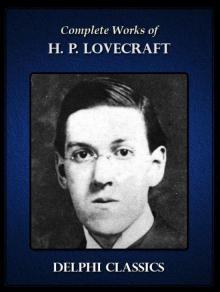 Delphi Complete Works of H. P. Lovecraft (Illustrated)
Delphi Complete Works of H. P. Lovecraft (Illustrated)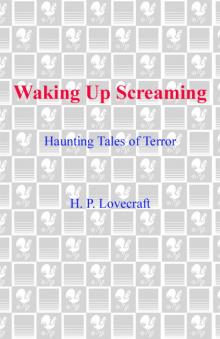 Waking Up Screaming: Haunting Tales of Terror
Waking Up Screaming: Haunting Tales of Terror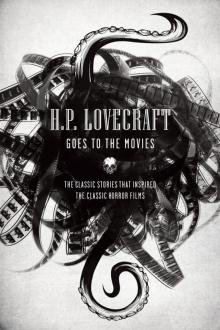 H.P. Lovecraft Goes to the Movies
H.P. Lovecraft Goes to the Movies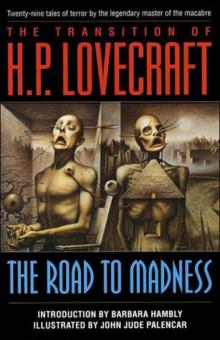 The Road to Madness
The Road to Madness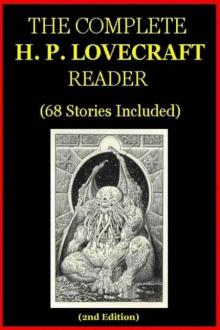 The Complete H.P. Lovecraft Reader (68 Stories)
The Complete H.P. Lovecraft Reader (68 Stories)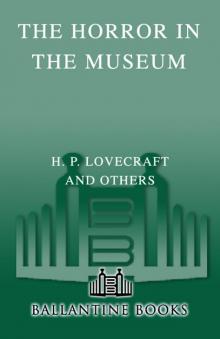 The Horror in the Museum
The Horror in the Museum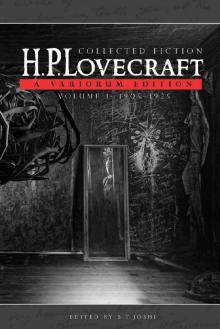 Collected Fiction Volume 1 (1905-1925): A Variorum Edition
Collected Fiction Volume 1 (1905-1925): A Variorum Edition Lovecrafts_Fiction, vol.I_1905-1925
Lovecrafts_Fiction, vol.I_1905-1925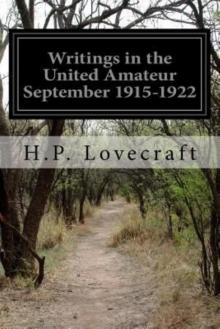 Writings in the United Amateur, 1915-1922
Writings in the United Amateur, 1915-1922 H.P. Lovecraft: The Complete Works
H.P. Lovecraft: The Complete Works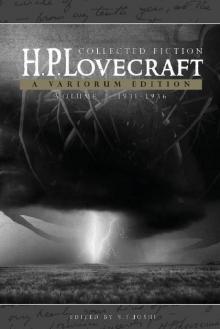 Collected Fiction Volume 3 (1931-1936): A Variorum Edition
Collected Fiction Volume 3 (1931-1936): A Variorum Edition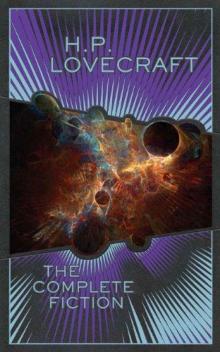 H.P. Lovecraft: The Complete Fiction
H.P. Lovecraft: The Complete Fiction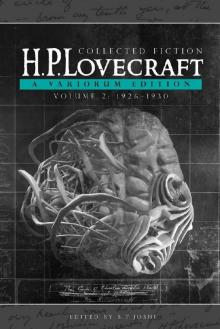 Collected Fiction Volume 2 (1926-1930): A Variorum Edition
Collected Fiction Volume 2 (1926-1930): A Variorum Edition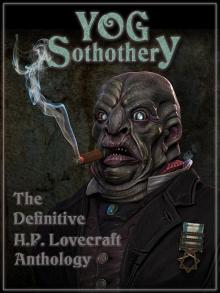 Yog Sothothery - The Definitive H.P. Lovecraft Anthology
Yog Sothothery - The Definitive H.P. Lovecraft Anthology The Complete H.P. Lovecraft Collection (Xist Classics)
The Complete H.P. Lovecraft Collection (Xist Classics)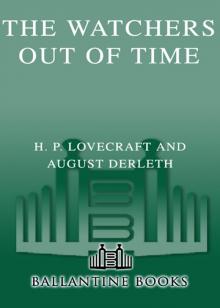 The Watchers Out of Time
The Watchers Out of Time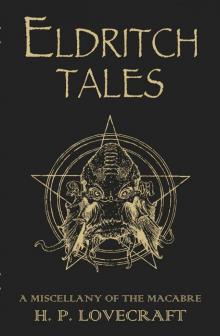 Eldritch Tales
Eldritch Tales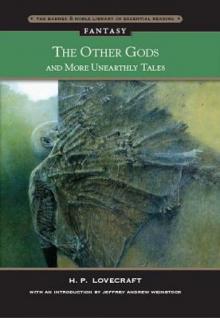 The Other Gods And More Unearthly Tales
The Other Gods And More Unearthly Tales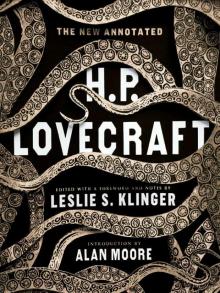 The New Annotated H. P. Lovecraft
The New Annotated H. P. Lovecraft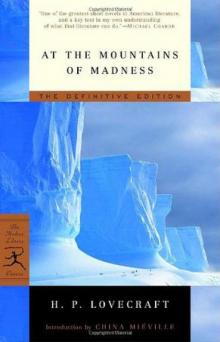 At the mountains of madness
At the mountains of madness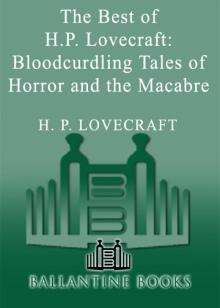 Bloodcurdling Tales of Horror and the Macabre
Bloodcurdling Tales of Horror and the Macabre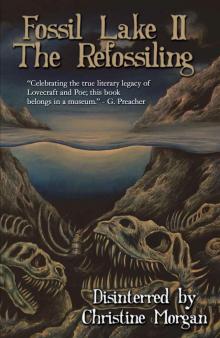 Fossil Lake II: The Refossiling
Fossil Lake II: The Refossiling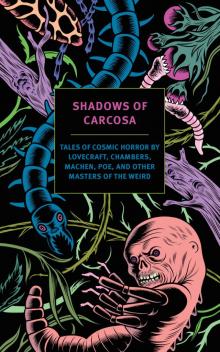 Shadows of Carcosa: Tales of Cosmic Horror by Lovecraft, Chambers, Machen, Poe, and Other Masters of the Weird
Shadows of Carcosa: Tales of Cosmic Horror by Lovecraft, Chambers, Machen, Poe, and Other Masters of the Weird H. P. Lovecraft
H. P. Lovecraft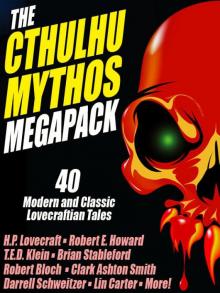 The Cthulhu Mythos Megapack
The Cthulhu Mythos Megapack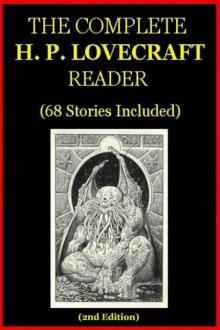 The Complete H. P. Lovecraft Reader (2nd Edition)
The Complete H. P. Lovecraft Reader (2nd Edition)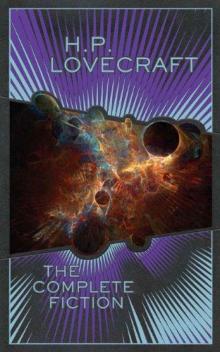 The Complete Fiction
The Complete Fiction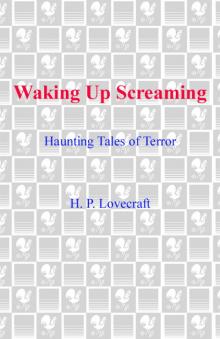 Waking Up Screaming
Waking Up Screaming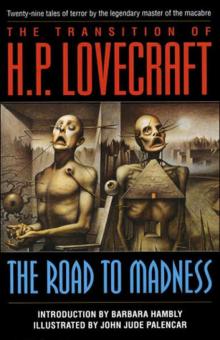 Transition of H. P. Lovecraft
Transition of H. P. Lovecraft![[1935] The Shadow Out of Time Read online](http://i1.bookreadfree.com/i2/04/12/1935_the_shadow_out_of_time_preview.jpg) [1935] The Shadow Out of Time
[1935] The Shadow Out of Time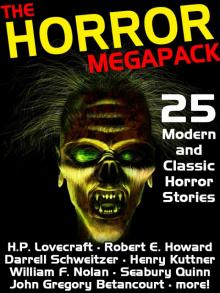 The Horror Megapack
The Horror Megapack